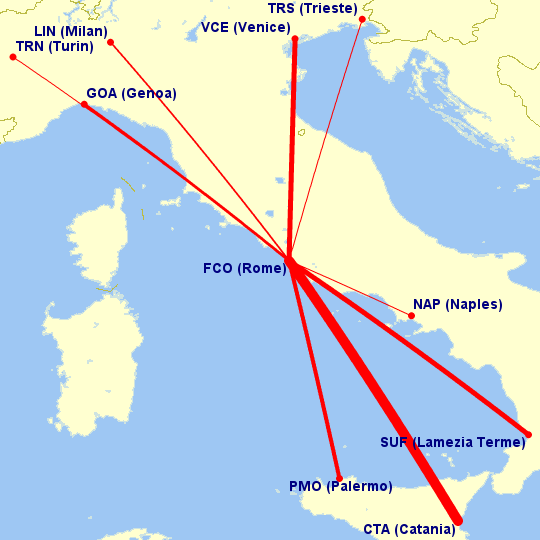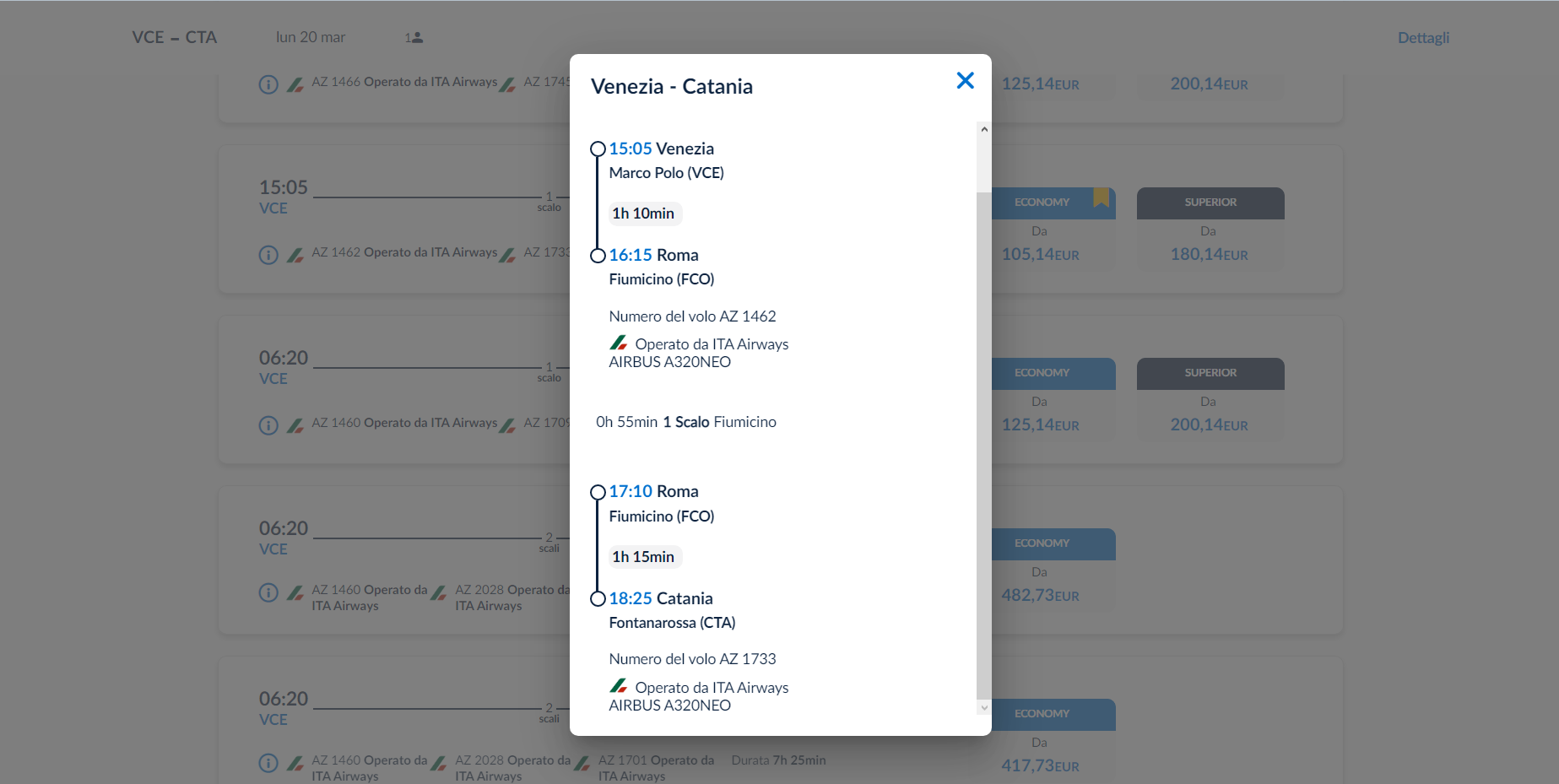Where is ITA Airways deploying its first A320neo?
This week saw the entry in service of ITA Airways’ first Airbus A320neo, the first of a total order for 23 aircraft of the type, as previously reported by Aviacionline. ITA’s first next-generation A320 family aircraft, EI-INB was named after Italian cyclist Francesco Moser, its maiden flight connecting its Rome/Fiumicino hub to Palermo, in Sicily.
As in the 1st flight, domestic routes will be a clear initial focus of ITA’s A320neo fleet, according to data powered by Cirium’s Diio Mi application and compiled by Aviacionline. These will benefit from savings of around 20% in fuel consumption versus the previous generation A320s.
Besides Cirium, Italiavola, an Italian blog focused on aviation, confirmed such intentions in a recent interview with ITA Airways’ Sales VP for Italy, Tommaso Fumelli.

According to Cirium, in March alone the Airbus A320neo will connect Fiumicino to Catania a total of 53 times, followed by Lamezia Terme and Venice (25 each), Palermo (22) and Genoa (eight). While there will be other destinations — some international — which will be operated less than once a week, the main missions of the neo will be domestic for this early phase.
Why domestic
While ITA Airways’ strongholds are supposedly Milan/Linate and its international operations (remember there is little specific information on that as ITA does not publish its financial data), domestic flights remain a fundamental part of its business.
That, not only because it has an important domestic presence, but also because its hub in Rome depends on the feed of such destinations, particularly in the shorter routes.
As such, adding the A320neo, provided its ownership costs do not offset the lower fuel expenses, offers an immediate cost advantage on a flight versus using an older generation A320.
Coincidently or not, the routes from Rome/Fiumicino where ITA faces the most vicious competition are domestic. More specifically, Ryanair faces the Italian airline in four of ITA’s top 15 destinations from Rome in terms of frequencies — all of them domestic.
These are Catania (190 frequencies by ITA in March versus Ryanair’s 193), Palermo (151 vs. 40), Bari (88 vs. 75) and Brindisi (67 vs. 55).
For ITA, the Fiumicino hub is important because it gives passengers more time options between two cities in different parts of the country, instead of the low-frequency nonstop routes low-cost carriers offer.
In this regard, boosting the national routes with the new aircraft type is a fundamental step to reduce the gap of costs between ITA and the ultra low-costs.

It’s important to remember that Ryanair’s CASK (how much it costs to fly one seat, one kilometer) stood at just over 4 cents of euro as of the second quarter of 2022. ITA’s CASK, meanwhile, was at about 8 cents according to a file reviewed by Corriere della Sera on December 2022, although it was not clear to which period of time that figure referred to.
So this (much) higher cost base makes the A320neo all the more important towards a lower cost base in a very competitive market; and it’s no wonder that the Catania and Palermo operations will be of particular focus, as these see the most competition against Ryanair.
Both routes, by the way, will see a third player later this year, as Aeroitalia announced, very recently, their intention of snatching some of the Sicily-Italian mainland traffic.
According to Cirium’s schedules, by March ITA should have at least two active Airbus A320neos in its fleet. By 2026, a press release by ITA said, the plan is to have 80% of its fleet composed by next-generation aircraft.
Why not Heathrow
It is known that airlines prefer deploying next-generation aircraft to and from London’s Heathrow Airport, given the airport charges that reward lower noise airplanes. Ireland’s flag carrier Aer Lingus, as Aviacionline wrote last year, is exclusively using its pair of A320neos in the air bridge between Dublin and the London terminal.
One would expect, therefore, that ITA would put their new A320neo in Heathrow, which the airline serves with two daily flights from Milan/Linate and two from Fiumicino.
The airline, however, returned the slots it leased in Heathrow to their owner, Etihad Airways, back in November. ITA’s last rotations to London’s main airport would happen in March 25, after which it is out of slots there.
Asked by Aviacionline via email, a spokesperson for the airline said that «the UK is a strategic market for ITA Airways and we confirm the will to ensure the connectivity to Heathrow. We are working to plan the timings and the best possible connections to keep operating in the English market, where ITA Airways is also present with daily connections to London City».
The fact ITA is prioritizing domestic instead of the last (for now) month of flights to Heathrow, therefore, hints the airline is putting all of its focus in the domestic market. They would rather drive costs down on the domestic showdown with Ryanair than reducing costs in the Heathrow market.

/https://aviacionlinecdn.eleco.com.ar/media/2023/02/A320neo2-scaled.jpg)
Para comentar, debés estar registradoPor favor, iniciá sesión